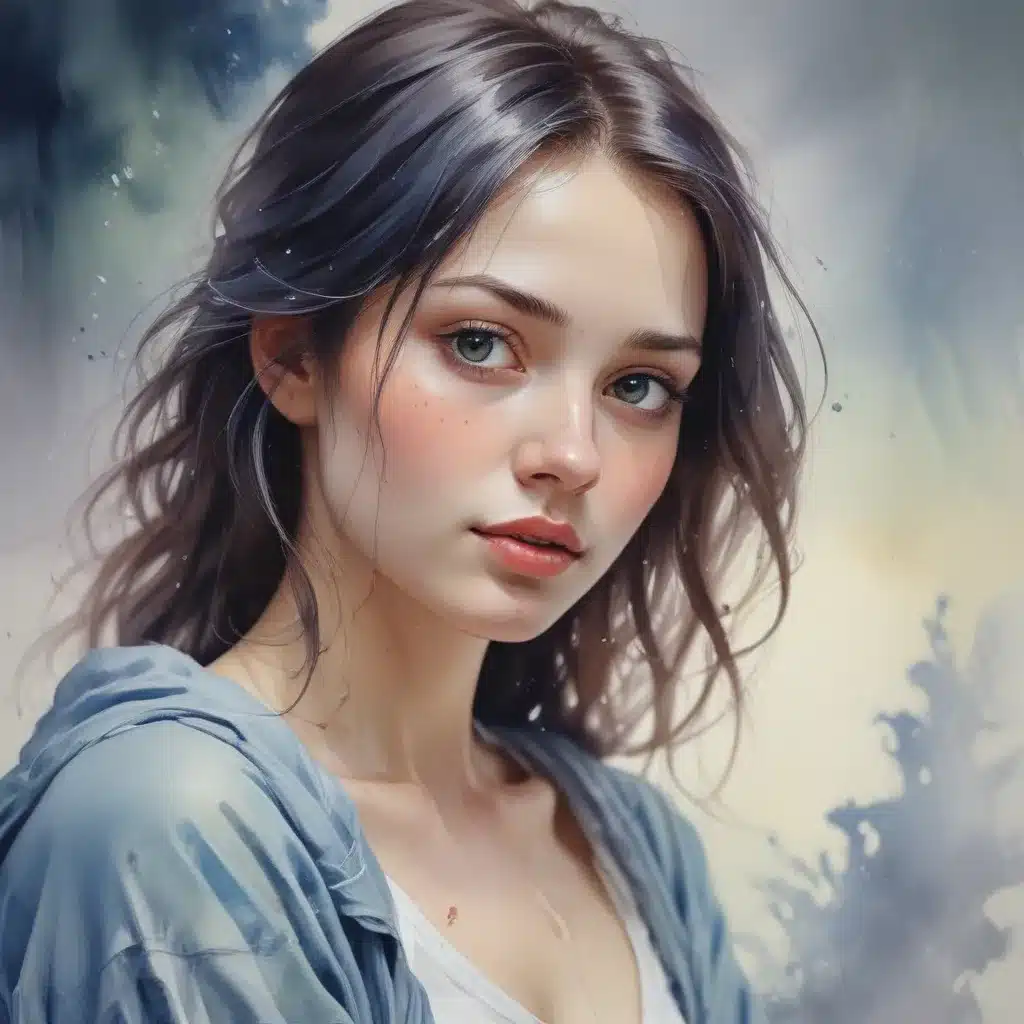
Watercolour painting holds a unique power to captivate the imagination and stir deep emotions. The medium’s innate fluidity and transparency lend themselves beautifully to ethereal, atmospheric, and evocative artworks that resonate on a profound level. Whether you’re a seasoned watercolour artist or just starting out, unlocking the full potential of this versatile medium can be a transformative journey.
Now, this might seem counterintuitive…
Art Mediums and Techniques
Watercolor Painting
Wet-on-Wet Technique: One of the hallmarks of watercolour painting is the wet-on-wet approach, where you apply pigment to a pre-wetted surface. This technique allows the paint to flow and blend organically, creating soft, hazy, and dreamlike effects. By understanding how water, pigment, and paper interact, you can harness the medium’s inherent unpredictability to produce stunning atmospheric washes and ethereal blends.
Dry Brush Painting: In contrast to the fluid wet-on-wet method, dry brush painting involves applying highly pigmented, thick paint directly onto the dry paper surface. This technique results in bold, textural strokes that can add striking visual interest and a sense of movement to your compositions. Mastering the balance between wet and dry strokes is key to achieving a harmonious, multi-layered watercolour painting.
Color Blending and Gradients: The ability to create seamless color blends and gradients is one of the hallmarks of watercolour painting. By strategically layering and mingling different hues, you can evoke a sense of depth, atmosphere, and emotion. Experiment with techniques like wet-into-wet, glazing, and controlled blooms to develop a nuanced understanding of how pigments interact on the paper.
Acrylic Painting
While watercolours are known for their luminous, transparent qualities, acrylic paints offer a more versatile and opaque approach that can also contribute to ethereal, atmospheric artworks. Explore techniques like impasto (thick, textural application of paint), glazing (applying transparent layers), and palette knife painting to create rich, multi-dimensional compositions.
Drawing Media
Drawing can be a powerful tool for ideation, sketching, and refining your artistic vision. Explore a range of drawing media, such as pencil sketching, charcoal, and ink washes, to capture the essence of your subject matter and evoke a particular mood or atmosphere. Each medium offers unique expressive qualities that can be combined with watercolour or acrylic painting techniques.
Creative Inspiration and Process
Exploring Themes and Emotions
When creating ethereal, atmospheric, and emotionally-charged artworks, it’s important to consider the thematic content and emotional resonance you wish to convey. Subjects that lend themselves well to this approach include landscapes, dreamscapes, celestial phenomena, and abstract representations of internal states. By tapping into your own feelings and experiences, you can imbue your work with a sense of authenticity and depth.
Developing Artistic Vision
The process of conceptual ideation and visual storytelling is crucial for crafting compelling, evocative artworks. Experiment with sketchbooking and journaling to explore visual motifs, experiment with compositions, and refine your artistic voice. Embrace an iterative approach, allowing your ideas to evolve organically through a process of exploration and discovery.
Cultivating Creative Habits
Developing a consistent creative practice can be transformative for your growth as an artist. Set aside dedicated time for experimentation and play, where you can freely explore the boundaries of the medium without the pressure of producing a “finished” work. Remember that mistakes and imperfections are an integral part of the creative journey, often leading to unexpected and serendipitous discoveries.
Painting and Drawing Tutorials
Foundational Techniques
Mastering the fundamentals of composition, design, and color theory is essential for creating powerful, emotive artworks. Experiment with different arrangements, shapes, and hues to evoke a specific mood or atmosphere. Understanding the principles of art and design, such as balance, rhythm, and emphasis, can help you craft visually striking and cohesive compositions.
Advanced Rendering
As you progress in your artistic journey, explore advanced rendering techniques to capture a realistic yet evocative representation of your subject matter. Whether you’re working in watercolour, acrylic, or drawing media, learn how to render believable textures, capture the illusion of depth, and imbue your work with a sense of realism. At the same time, don’t be afraid to embrace stylized and expressive marks that amplify the emotional impact of your artwork.
Personalized Approach
Ultimately, the most captivating and meaningful artworks are those that reflect your unique artistic voice. Experiment with different materials, techniques, and subject matter to find what resonates with you and develop a personalized approach. Remember that embracing mistakes and imperfections can lead to unexpected breakthroughs and a more authentic, emotive final product.
Art Theory and Design Principles
Elements of Art
The elements of art – line, shape, form, color, texture, space, and value – are the building blocks of any successful artwork. By understanding how to wield these elements effectively, you can create visually captivating and emotionally impactful compositions. Experiment with the interplay of these elements to evoke a specific mood or atmosphere in your watercolour, acrylic, or drawing-based artworks.
Principles of Design
The principles of design – balance, rhythm, emphasis, contrast, proportion, and unity – are the guiding principles that help you organize the elements of art into a cohesive, visually compelling whole. Apply these principles to your compositions to create a sense of harmony, movement, and visual interest that draws the viewer in and resonates on an emotional level.
Aesthetic Considerations
Beyond the technical aspects of art-making, aesthetic considerations such as minimalism, simplicity, symbolism, and metaphor can elevate your work to new heights. Embrace a pared-down, elegant approach that allows the inherent qualities of the medium to shine, or imbue your artworks with deeper, symbolic meaning that resonates with the viewer on a subconscious level.
By mastering a diverse range of watercolour, acrylic, and drawing techniques, cultivating a rich well of creative inspiration, and applying foundational art and design principles, you can unlock your full potential as an artist and create ethereal, atmospheric, and emotionally-charged artworks that captivate and inspire. The journey of exploring the expressive possibilities of these mediums is a truly rewarding one, so embrace the process, experiment fearlessly, and allow your artistic vision to flourish.
Tip: Practice daily sketching to continually refine your technique